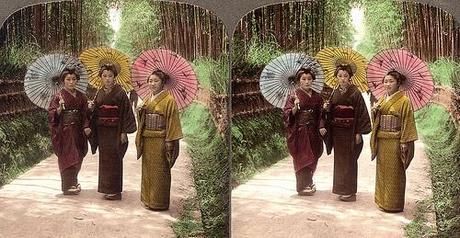 Regardless of country or nationality, nature is of course a big part of all of our lives. We are impacted and influenced every day by the weather. Natural disasters ravage every part of the globe in different forms, and all our modern conveniences are built on, out of, or with natural materials. The seasons bring different events, customs, and feelings to all of us. Though our modern lives can seem removed from the natural environment, there is no escaping the fact that we are forever and inextricably tied to and dependent on mother nature.
Regardless of country or nationality, nature is of course a big part of all of our lives. We are impacted and influenced every day by the weather. Natural disasters ravage every part of the globe in different forms, and all our modern conveniences are built on, out of, or with natural materials. The seasons bring different events, customs, and feelings to all of us. Though our modern lives can seem removed from the natural environment, there is no escaping the fact that we are forever and inextricably tied to and dependent on mother nature.
Japan is no exception and is in fact sometimes referred to as a country that is tuned into nature and really reveres it. We’ll leave that judgment up to each individual. However, as the recent earthquake and tsunami have shown, the country is battered by the forces of nature quiet frequently and often savagely. There are also a lot of festivals and events in Japanese culture that celebrate the seasons. These include cherry blossom festivals and hanami (literally, “flower watching”) parties in the spring, moon viewing in the fall, and the custom of eating eel in the summer to give stamina and strength during the long hot and humid days (perhaps the last is just a good marketing campaign by a company that sells eel?). Either way, the interaction with nature is important and gets expressed through various media.
Japan, whose economic performance has been derided for decades, should use this strong link to nature to stand out in the new clean economy. Whether its often rigid society and inept political system can do enough to support such a transformation is the question.
If you’re in the DC area and want to hear an interesting lecture touching on the theme of nature in Japanese culture, then Sunday August 28th at 2pm is for you. What on earth do Japanese kimonos have to do with nature and environmentalism? Well, if you listen to scholar Ann Marie Moeller, she may be able to explain it to you at the Texile Museum in Washington, D.C.
Kimono and Green: The Color of Gods and Youth SUNDAY, AUGUST 28, 2 PM The color green plays a particularly important role in the nature-oriented culture of Japan. From the green used to identify kabuki actors to the green of an obi signaling a geisha in training, this color has communicated information about its wearer for centuries. Plants that remain green throughout the year were considered auspicious since they were obviously favored by the forces of nature. These plants continue to have symbolic significance on modern kimono. These plants continue to have symbolic significance on modern kimono. Join scholar Ann Marie Moeller as she draws connections between the Japanese reverence for nature and the use of green in the nation’s textile arts.
[Image]

